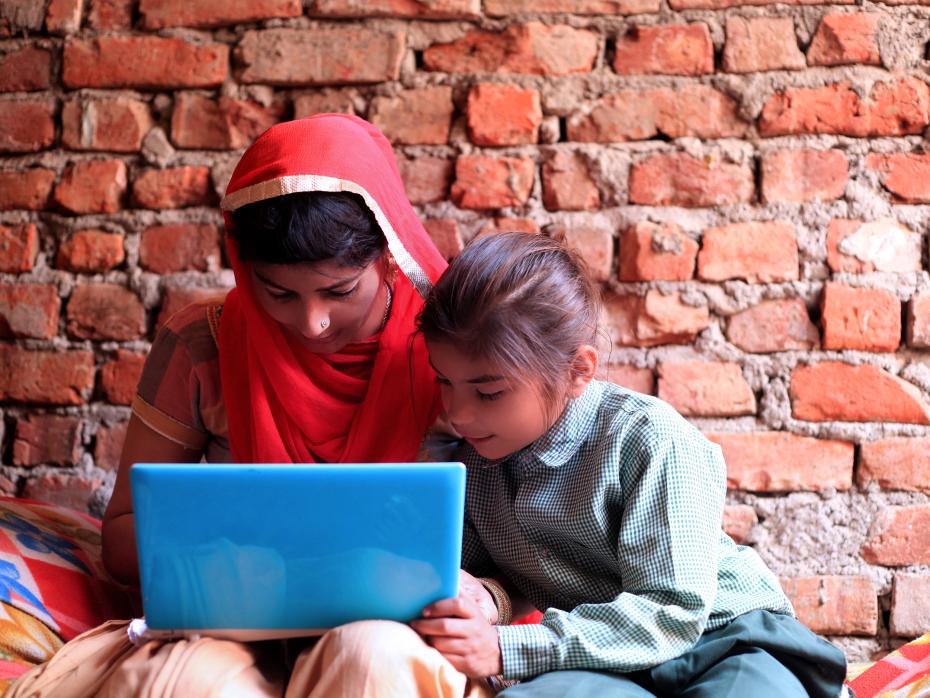As the Biden administration cajoles Congress to cobble together the next big deal, widely expected to be infrastructure-based, greater attention should be paid to the gaping and growing digital gap that is also accelerating systemic inequality between rural and urban Americans, as well as lower- and upper-income students.
The educational disruptions caused by the pandemic have intensified the damage wrought by unequal access to broadband and other high-speed internet infrastructure, widening the gulf between the haves and have-nots. Consequently, the emerging infrastructure bill should also prioritise funding to bridge the digital gap, provide equal access to learning opportunities and improve social and economic mobility across the country.
While the absence of broadband access for many in the US has always been a matter of concern, the school closures precipitated by the pandemic suddenly elevated the issue to crisis proportions. The pandemic helped expose an insidious digital divide that imperils efforts to reduce inequality, increase economic productivity and promote social mobility.
The number of Americans lacking high-speed internet is generally estimated at about 25 million, although researchers at Broadband Now say that it’s more like 42 million. As the pandemic raged over the past year, school closures disrupted traditional instructional delivery to a staggering 55 million-plus students in US classrooms and up to 1.6 billion enrolled learners worldwide.
Overnight, many schools and colleges made a dramatic pivot from a model centred on campus-based, in-class learning to online provision, making portals such as Zoom, Canvass and Blackboard household names.
Yet, for the millions of digital have-nots in rural areas of the US, where only two-thirds of people enjoy broadband connectivity at home, it was not always possible to get to that Zoom class meeting or to access streaming video through Canvass.
This rural-urban broadband disparity was reflected in a 2018 Pew Research poll that found that 58 per cent of rural residents stated that high-speed internet access was a problem in their area, compared with only 13 per cent of metropolitan denizens. Black and Hispanic households are also less likely than white households to have reliable access to devices, the internet and high-speed broadband.
Moreover, a recent Pew Research study revealed that 36 per cent of low-income parents indicated that their kids were unable to complete schoolwork at home because of the lack of access to a computer, versus 14 per cent of middle-income parents and 4 per cent of upper-income parents.
The race to find reliable wi-fi connections with at least 25 megabits per second had students (and their parents) driving miles to access the internet and encamping in parking lots adjacent to public libraries, cafes and restaurants. Even where the technology is accessible, many low-income families struggle to keep up with monthly wi-fi bills, particularly during the economic downturn exacerbated by Covid.
With about 35 per cent of schoolchildren in homes without internet connectivity, many students struggled academically, inflating the “homework gap”. Partly because of these digital access challenges, absenteeism rates soared and performance levels dropped, with as many as one-third of students in some school districts not logging in for coursework.
The absence of live instruction during online learning impeded many students’ progress, including students of colour, who were much less likely than white students to experience “live contact with teachers”. An assessment last autumn by McKinsey & Company revealed that while most students fell behind in the transition to digital learning, students of colour fell about three to five months behind while white students were about one to three months behind.
The vortex of challenges triggered by the pandemic, coupled with inadequate internet access for learning purposes, left many teachers and their students flummoxed, frustrated and frazzled.
As a result, many institutions implemented creative solutions to address the access and affordability challenges. Some provided Chromebooks, smartphones and free internet hotspots to students in areas without internet access to help them avoid using inadequate smartphone data plans. Some districts deployed buses with solar-powered wi-fi routers in underserved neighbourhoods to provide round-the-clock access to broadband for online classes.
In turn, the pandemic’s seismic impact further accelerated innovations in course delivery and design, including novel collaborations that will transform how some students acquire knowledge in the future. For example, the University of Pittsburgh-Johnstown partnered with Outlier.org in late 2020 to promote access to affordable, world-class teaching and learning in an endeavour recognised as one of Time magazine’s “Best Inventions of 2020”.
The pandemic has clearly increased awareness that high-speed broadband is a critical element of national infrastructure and that equal access for all citizens should be a topmost priority in the fight against systemic inequities. Going forward, a successful bill to tackle our national infrastructural challenges, including expanding broadband access and reducing systemic digital inequality, would certainly be a big, even monumental, deal.
Jem Spectar is president of the University of Pittsburgh-Johnstown and author of the book Movement + Music = Medicine: Fight Alzheimer’s, Dementia & Parkinson’s.




comment